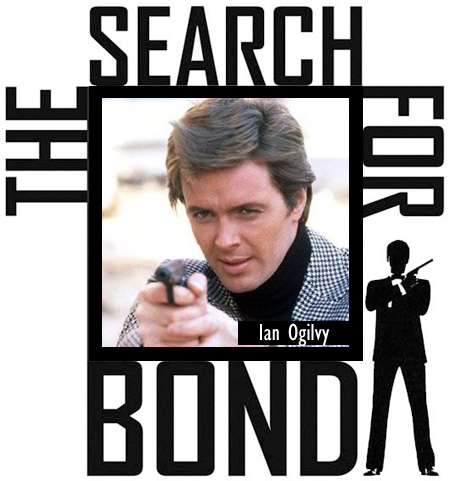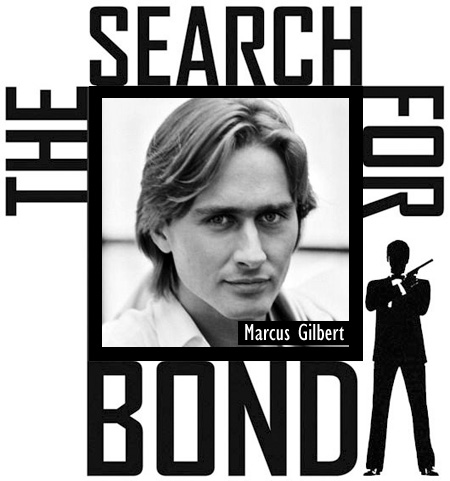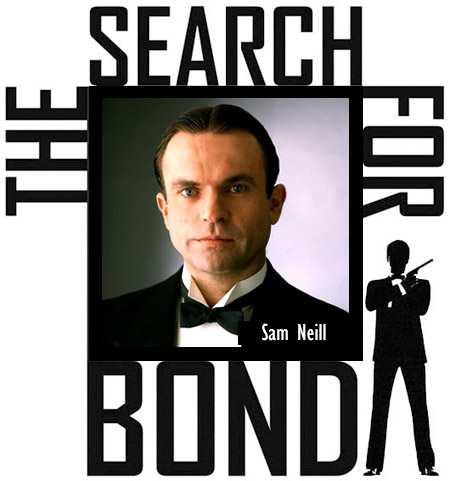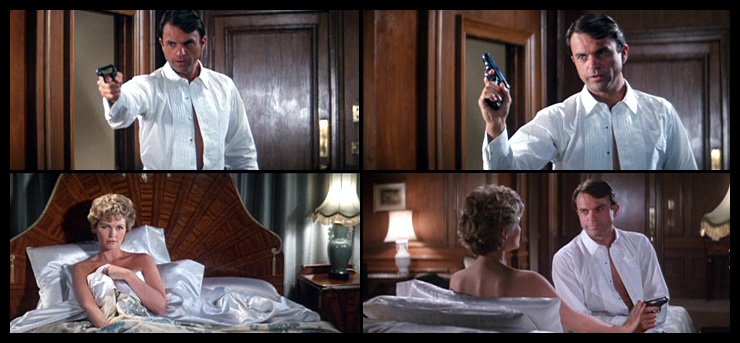|
Ogilvy never knew just
how close he came to being Bond until he was having lunch one day with
friends and one of the guests was Jerry Juroe, head of publicity for EON.
“After lunch Jerry said, ‘can I have a word?’ He took me to one side and
said, ‘I don’t know really whether I will tell you this but you’re a nice
guy so I think I will.’ I was most intrigued. He carried on. ‘We’ve been
looking at lots of people. I’m not part of the decision making process but
I know about it. Your name was very seriously considered because of the
whole Roger Moore/Saint connection. But the decision has been made, if we
wanted another Roger Moore you’d have got the part, but we don’t, we want
another Sean Connery.’ And the relief I felt, I swear, was so great, it
was, thank God for that.”
A strange reaction one
might think upon learning that you were a hairsbreadth away from winning
the most coveted role in cinema history. But Ogilvy has his reasons. “You
see, I don’t really think I was right for Bond. I didn’t have a hard
enough edge. I don’t think Roger was right for Bond either, by the way. So
that’s as close as I came to it. But that would have worried me being the
new Bond. Being the new Saint I thought, yeah I can handle that, but being
the new Bond is a very different kettle of fish because it’s much more
international and people have much stronger opinions about Bond. And it
would have altered my life completely, probably for the better, but I
think I would have been unfavourably compared. I also think I was
physically wrong for it. I think I was too slight, physically.” |
|
Another quintessentially
English actor considered was Marcus Gilbert. Not that long out of drama
school Gilbert was represented, ironically enough, by the same agent as
Timothy Dalton. “He had a very illustrious client list, and I was young
and promising and he facilitated the opening of lots of doors. I was lucky
to be seen by the likes of Zeffirelli and Milos Forman. So without wishing
to sound arrogant, Bond was just another audition. Sure it put a bigger
smile on your face and it was exciting, but you didn’t want to get carried
away with the possibility because you had to get over the first hurdle.”
That first hurdle was an
interview at EON’s office in Mayfair. “They were all there,” recalls
Gilbert, “Cubby Broccoli, Michael G. Wilson and Barbara. I can’t remember
what I was asked, I think they just wanted to sample the man sitting
before them, they probably wanted to hear all the right things.” It’s
difficult, especially for a young actor, to enter such an arena completely
in the dark, unable to affect the outcome, and unable to second guess your
inquisitors because you don’t know what they’re looking for. “But these
are not considerations you take on when you go through the door because
you believe you can do it otherwise you wouldn’t be there. I remember all
that spontaneity, all that confidence and self-assuredness that
accompanies youth, so you always think you stand a chance. You can also go
in with the appropriate attitude, but I’m not sure I had that.”
Another factor might have
been Gilbert’s stock English good looks. He was very much in the same
mould as Ian Ogilvy and so following on from Roger Moore wouldn’t have
been seen as distinctive enough. “I think it’s a question of timing,” says
Gilbert. “The producers are looking for something different. They’re
looking for a certain thing, a certain flavour and if you don’t provide
that for them then they’ll spread the net a little wider. It’s obviously
something very specific that they’re looking for. And that turned out to
be Tim Dalton who we thought was in for the long run until they decided
that he wasn’t what they were looking for and then Pierce Brosnan was
cast. So that interview really was my one and only chance at Bond. I
didn’t necessarily blow it; it was just that the timing was bad. At least
I was seen for it, ultimately pointless, but there we go.” Gilbert went on
to become something of a heartthrob in the late 80s and early 90s,
appearing in a couple of TV adaptations of Barbara Cartland novels, A
Hazard of Hearts (1987) and A Ghost In Monte Carlo (1990),
along with Jilly Cooper’s racy TV drama Riders (1993). |
|
The search continued, and
casting director Debbie McWilliams came up with a very real possibility –
Sam Neill. “I think Sam stood a very good chance in those early days,” she
later recalled. Michael Wilson was also keen on him, as was director John
Glen. Neill was born in 1947 in Omagh, Northern Ireland, the son of a
Harrow and Sandhurst-educated army officer and third generation New
Zealander. Neill returned with his family to New Zealand in 1954 and
caught the acting bug while at university. After working at the New
Zealand National Film Unit as a director and actor, Neill appeared in the
Australian classic My Brilliant Career (1979), which in turn led to
his selection to play Damien Thorn in Omen III: The Final Conflict
in 1981. |
|
But it was the strong
impression he made in the 1983 British TV series Reilly: Ace of Spies
that brought him to the attention of the Bond team and he was duly brought
to London for a screen test that impressed everyone who saw it, except the
one person who really mattered; Broccoli was not convinced. So it
transpired, neither was Sam Neill, who responded kindly to my request for
a comment with this email: “I was once pushed by an ex-agent into a test
for Bond. I am still not sure why I agreed. Actually in hindsight I think
I was more easily bullied in those days. This is a role I never wanted,
nor would have accepted. I was clearly unsuited for it. Only in the rarest
of cases, is it anything other than a poison chalice. Acting James Bond is
one thing, but ‘being’ James Bond I would find insufferable. By the way
I’ve thought all the Bonds were terrific in their own way. Much better
than I would ever have been. And I’m sure they all enjoyed it, just as I
never would.”
Ultimately, Sam Neill
didn’t need Bond to succeed, carving out a remarkable career in movies
with the likes of A Cry In The Dark (1988), Dead Calm
(1989), The Hunt For Red October (1990), The Piano (1993)
and Jurassic Park (1993) among his big-screen successes. |





